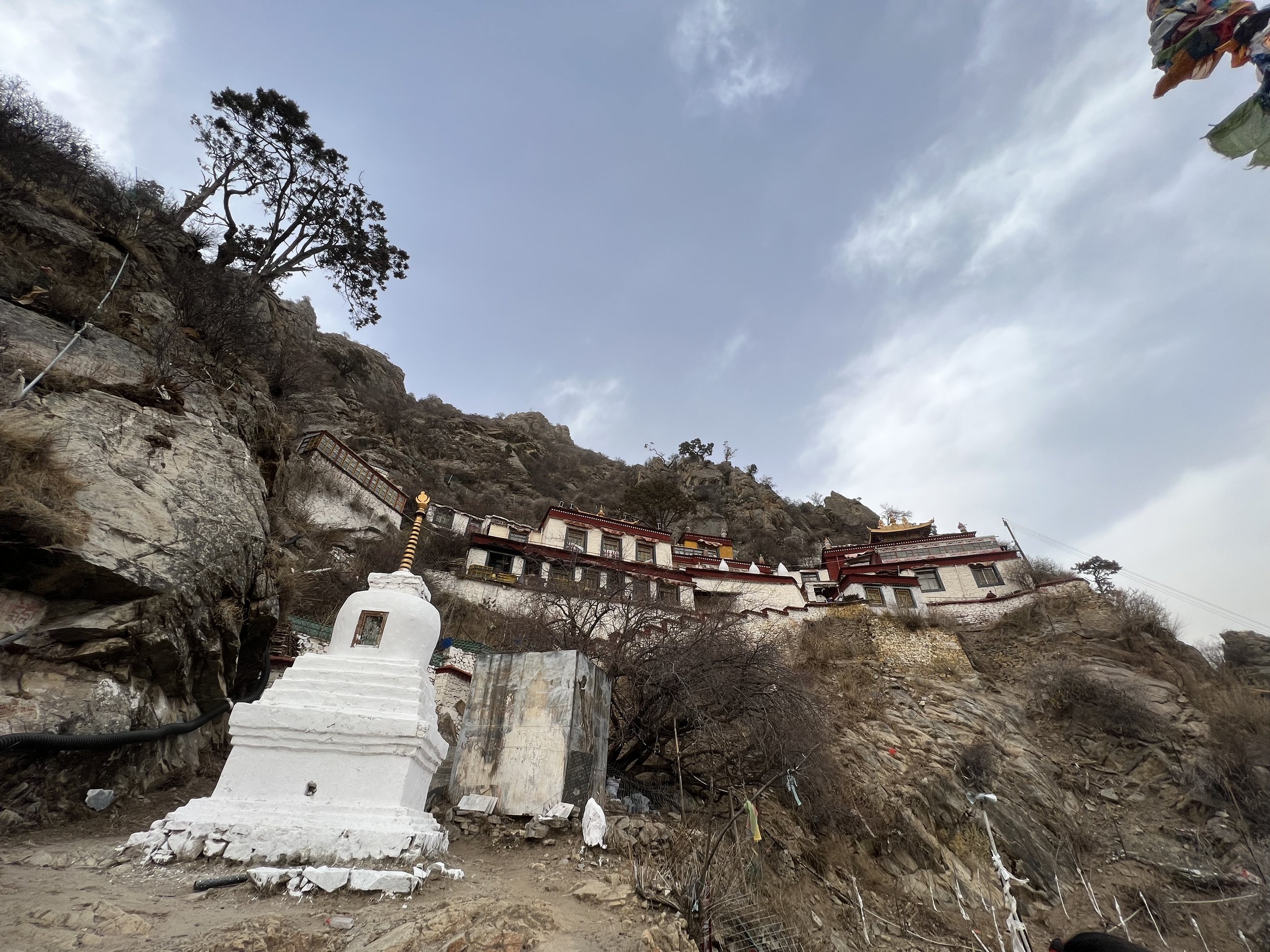Drakmar Yamalung
“At Yamalung and Liyul Changra
You accomplished Tobden Nakpo, ‘Black Powerful One’.
To you, Vairocana, with your wisdom eye,
We pray: please grant your blessings!”
at a glance
The cave complex known as Drakmar Yamalung received the blessings of the Mahaguru through the practice of Möpa Drakngak, in which Vajrapani manifests as a worldly deity. Acting upon the guidance of the Mahaguru, his devoted disciple and translator Vairocana chose this site of Drakmar Yamalung as his secluded hermitage. Not only did he engage in translation work there, but he also diligently practiced and attained mastery in the Möpa Drakngak practice within the cave complex.
the story
Drakmar Yamalung cave holds great significance as the location where the Mahaguru himself engaged in the potent practice of maledictory fierce mantras in order to subjugate enemies and overcome obstacles. The profound teachings of Möpa Drakngak had originally been unveiled at Sitavana by the vidyadhara Shantigarbha in conjunction with Guru Padmasambhava. Later, as Guru Padmasambhava further deepened his esoteric practices in the sacred charnel grounds, he reunited with Shantigarbha and received comprehensive instructions on the practice of Möpa Drakngak. Now, upon his arrival in Tibet, the Mahaguru chose the cave at Drakmar Yamalung to establish a sacred site specifically associated with the practice of Möpa Drakngak. By engaging in dedicated practice within this cave, he not only introduced the tradition of Möpa Drakngak but also bestowed blessings upon the site as a place of accomplishment for the Kagyé deities. During the auspicious Kagyé empowerments held at Samyé Chimpu, the Mahaguru entrusted the teachings of Möpa Drakngak, in particular, to the esteemed lotsawa Vairocana. Vairocana was sent to Drakmar Yamalung, where he practiced Möpa Drakngak with the utmost devotion and diligence.
Guru Padmasambhava also further empowered and consecrated several vases filled with a precious longevity amrita at Drakmar Yamalung. These vases were intended to bestow an extended lifespan upon the king. Unfortunately, the king’s ministers, hostile and suspicious, prevented him from partaking of the elixir. In response, the Mahaguru took the decision to conceal the vases as treasure items. His intention was for these hidden treasures to be discovered and utilized by future generations at an opportune time.
Words from the Masters
Changdak Tashi Topgyal’s Prayer to the King and Twenty-Five Disciples
Jamgön Kongtrul Lodrö Thayé’s Prayer Summarizing Khandro Yeshé Tsogyal’s Life and Liberation
How to get there
The pilgrimage site at Drakmar Yamalung (29°27'32"N 91°30'31"E) is 20 km from Samye. As you draw near to Yamalung, you will get your first glimpses of the monastery and the prayer flags that decorate the mountainside. Once you reach the monastery, follow the prayer flags and the stream of pilgrims up the short, steep trail that leads to the main Guru Rinpoche cave.
Some experienced pilgrims suggest that Drakmar Yamalung should be incorporated within the larger kora loop that starts at Samye and passes through Samye Chimpu, Drakmar Yamalung and so forth – thereby including all five major Guru Rinpoche sites in central Tibet, including Drak Yangzom. However, this is a strenuous route that takes several days and requires excellent physical health, permits and a guide.
While at the main site
Cave of the Fifth Dalai Lama
Above the Guru Rinpoche cave is the meditation spot of the Fifth Dalai Lama, where he practiced when visiting Yamalung. The rock on which he sat remains a site where pilgrims offer prayers.
It is also believed that the Fifth Dalai Lama gave teachings to disciples in the Yamalung meadows below the cave.
Cave of Vairocana
In the cliffs above the main site is the cave where the great translator, Vairocana, is said to have attained enlightenment.
Beyond the main site
Drakmar Drisang
On the way to Drakmar Yamalung from Samye monastery, you will pass the birthplace of Dharma King Trisong Detsen. This site is known as Drakmar Drisang.



